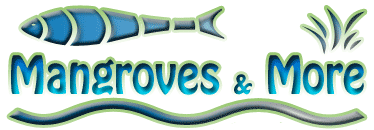This refugium pack includes:
-
5 x Mangroves pods,
-
5 x Amphipods,
-
250ml Copepods,
-
1000 grams Livesand 0.5mm 1.mm
-
200ml Cheato,
-
250grams Rock Rubble.
Copepods are the second largest source of protein in the oceans, second only to krill. They are the natural food of many fish in the oceans, especially the early life stages.
Some fish will not eat non-living foods, and require live feeds such as copepods and mysids. Some good examples are: mandarin gobies, any seahorse species, scooter blennies, and early life stages of dottybacks, chromis, tangs, flame angels, etc. Owner's of these type of fish definitely need a consistent and reliable source of copepods for feeding.
Reef tank systems do better when there are a variety of natural organisms to maintain the ecological balance. The reason that "live rock" or "live sand" is such a great item is that it provides a foundation for healthy microorganisms that will allow the larger, more visible fish and invertebrates to thrive.
Over time, the population of the invertebrates from the live rock will naturally decline, as they are grazed by the corals, anemones, fish and shrimp in the tank.
Mangroves copepods are a great way to boost your natural populations of copepods.
You will receive a good batch of copepods in each container.
If you replenish your system regularly you will give these a good chance of survival.
Mangroves copepods are detritivores and will stay in your
tank without any additional food.
ACCLIMATION
Mangroves & More Copepods are shipped in a 250ml Pouch at 28 ppt to 32 ppt salinity (1.022 to 1.025) with a little bit of food (this food will not harm your tank residents). Copepods will settle to the bottom during shipping, so if you open the bottle and don't see any, try shaking it up.
It is not unusual at one time or another when keeping a saltwater aquarium to find tiny microscopic-like white bugs swimming or crawling all over your tank. What you are most likely seeing are Copepods and/or Amphipods. These are shrimp-like crustaceans that dwell in the substrate as adults, but during their larval and juvenile stages are most often free swimming. Because of the complex number of families, genera, and thousands of species contained within the Phylum Arthropoda > Class Crustacea > Subclass Copepoda, and Subclass Malacostraca > Order Amphipoda / Order Amphipoda groups , we are not going into detail about the taxonomy of these organisms, but here are some basic facts about these tiny crustaceans.
There are both pelagic (free swimming), and benthic (bottom dwelling) bugs.
Copepods occur in all types of aquatic ecosystems; freshwater, estuarine (brackish) and marine.
Amphipods are mostly found in marine ecosystems, but there are some freshwater and terrestrial species.
They are just a few of the tiny animal organisms that make up zooplankton, which contributes to the make up of plankton.
These creatures eat phytoplankton (tiny plants and algae that also help make up plankton), small microzooplankton (the division of zooplankton that are smaller than 200 microns, or 1/127th of an inch in size), and detritus.
Only a few of the thousands of species of copepods and amphipods known are carnivorous or parasitic, and these are rarely found in a saltwater aquarium system.
For many saltwater fish and other marine species, copepods and amphipods are a primary food source, both in nature and in captivity.
Because these tiny organisms are a natural part of the plankton food chain in the ocean realm, they are naturally going to occur in a saltwater aquarium environment. They are also micro-cultured as food for various species of adult marine animals, as well as used and tested as a food source in the research of culturing and rearing all kinds of tank-raised fry.
Copepods and amphipods most often appear in closed aquarium systems after live sand and/or rock has been added.
WE DESPATCH DAILY MONDAY TO THURSDAY 1ST CLASS ROYAL MAIL.
|





